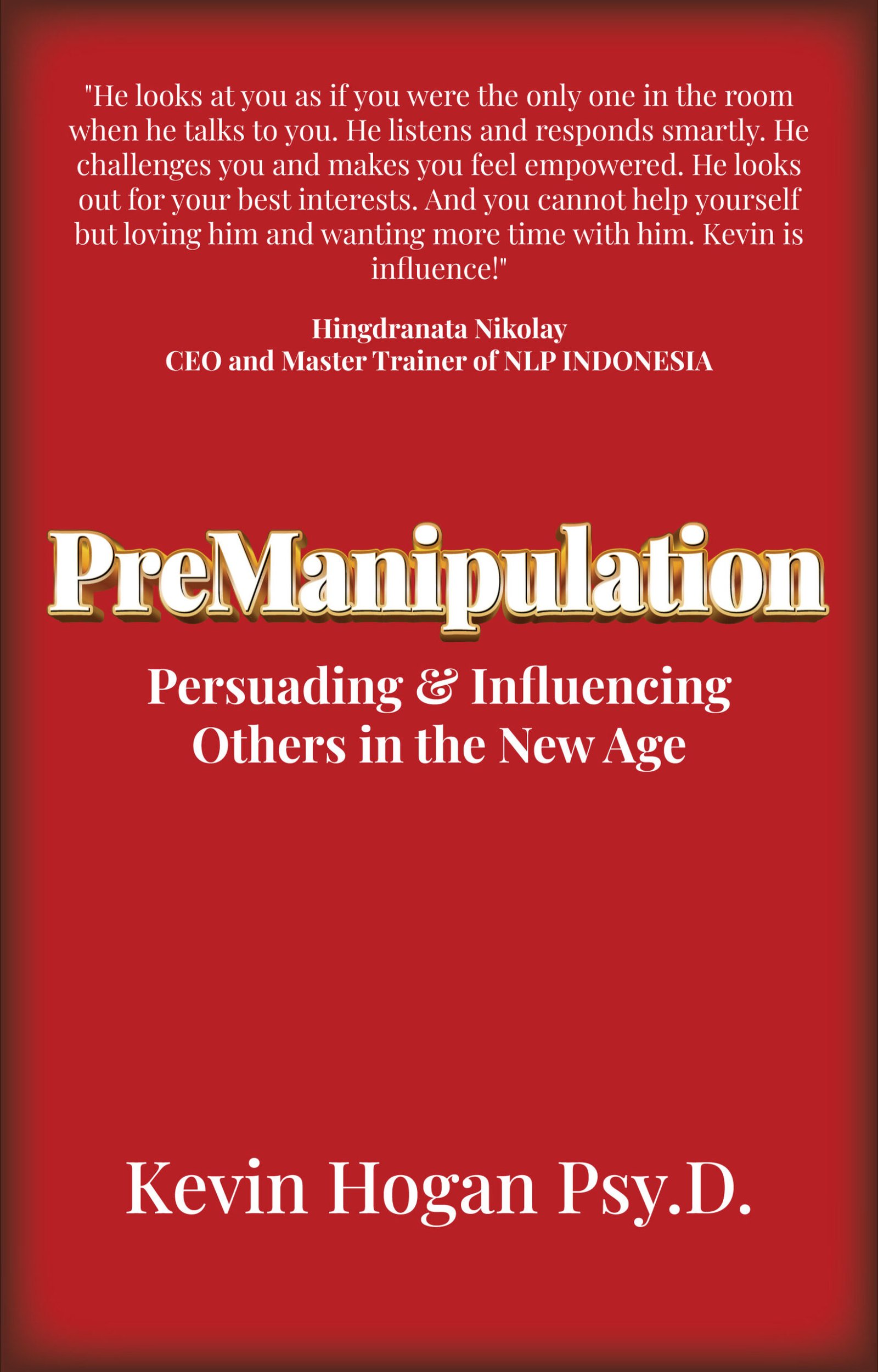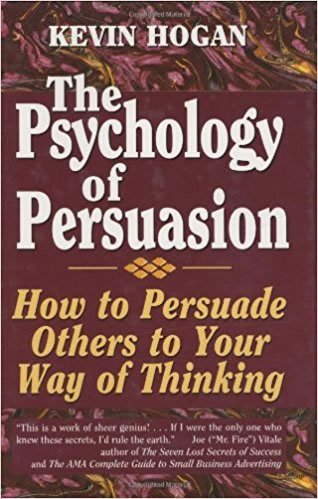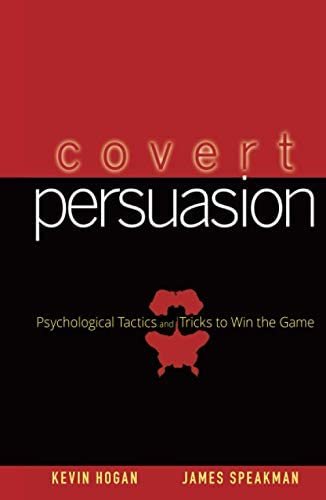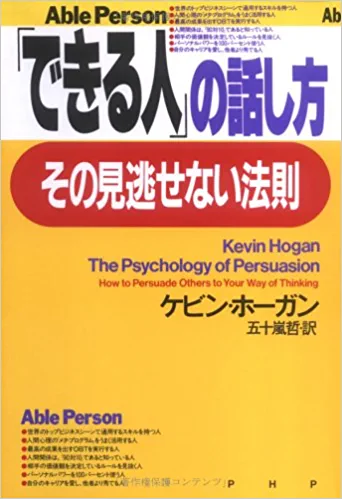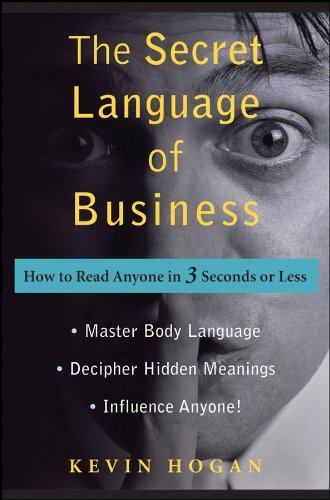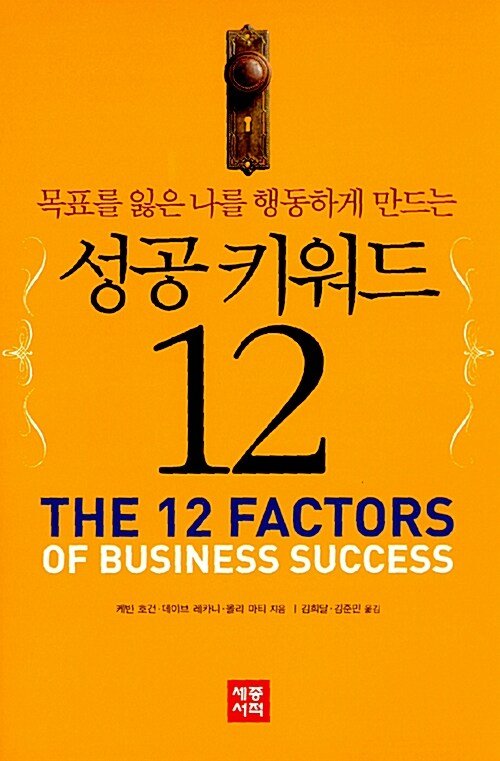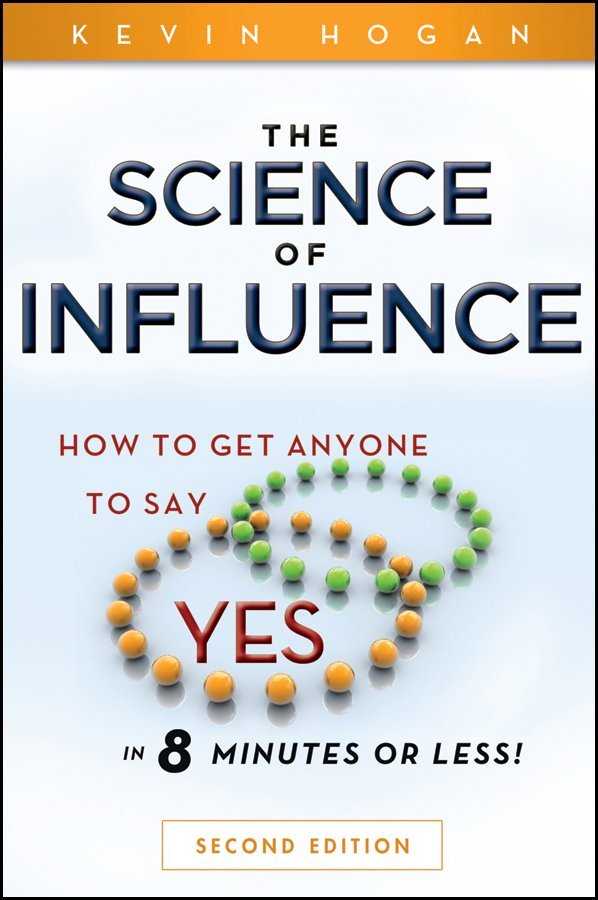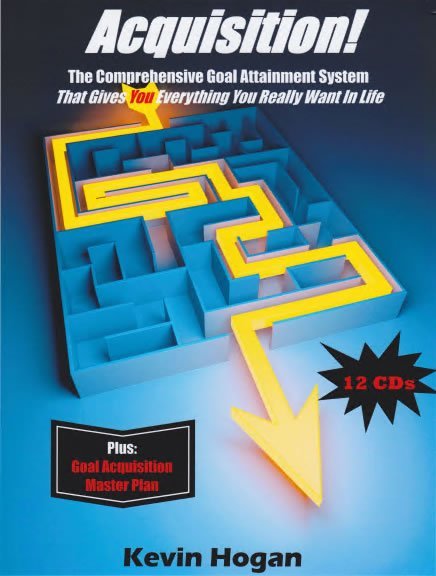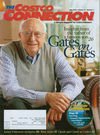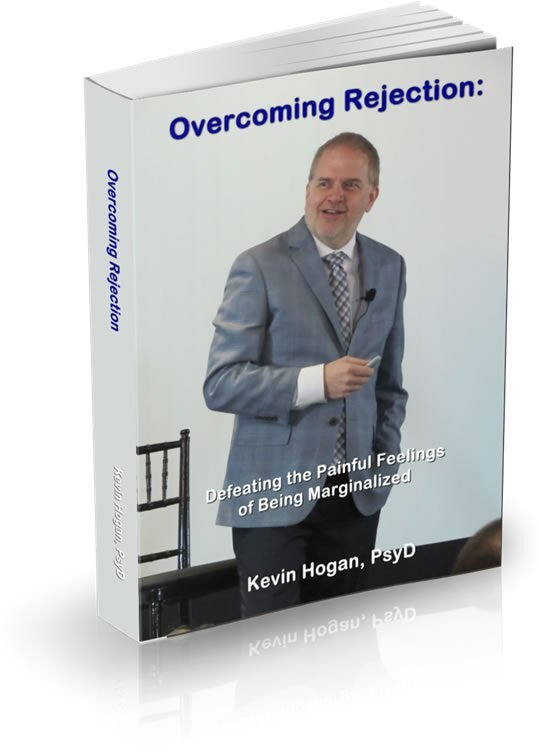
An Introduction to Selling in the 21st Century
Persuasion and Influence Training Manual
Copyright Kevin Hogan, 2020
There are hundreds of ways to present information to clients, customers, prospects, and buyers. The 21st century model of selling is really just one of our top ten favorite models of selling. When we are making our presentations and proposals to others in the sales process, we should note the following key elements are occurring whether it is a one on one lunch date or a public speaker before a group of 1,000. This model has been proven effective and we recommend you utilize it in your business.
(1) Establish and Maintain Rapport
Rapport can be defined as being in synch with another person. Generally people are more likely to be in rapport with someone else if they like that person. How do you know if you are in rapport? Answer this question: Are they responding to you in a positive manner?
If so, you are in rapport.
Remember what Ziglar said. They don’t care what you know until they know that you really care. Therefore, you will want to begin to develop a sense of empathy and sincere curiosity about others. Rapport occurs on different levels of communication. You can be technically skilled at acting and appear to be in rapport, but if you don’t sincerely care about your customer and the people you are working with, what is the point? There are several methods of developing rapport.
(2) Use Content to Build Rapport
Discover what their interests are and if you are already not in tune with the interest, learn about it. People love to talk about what they love and what they know about! When I (KH) teach Mind Access seminars one of my favorite stories about building rapport is the “learning about fishing” story. Living in Minnesota, many of my clients are avid fisherman. How would I connect with my clients knowing absolutely nothing about fishing? I grew up a Chicago Cubs fan, a child prodigy in mathematics, and even though I lived very close to Lake Michigan, unlike most kids, I never enjoyed fishing. In Minnesota, a big deal is made every year when it is time for the “opener.” To my mind, “opener” means opening day at Wrigley Field. To the mind of many of my customers the only Wrigley they know about is the chewing gum. It seems I am doomed at meeting many of my clients at more than a superficial level…until one day…
….I decided to learn about fishing by asking all of my clients that love fishing to tell me their favorite fishing stories. I began asking questions that to them must have seemed absolutely ridiculous. Over the last few years, I have built an array of knowledge and stories about fishing. I can direct you to all of the best lakes for fishing and I can tell you what to fish for at these lakes…and I’ve never been fishing in the state, not once. You can build a great deal of rapport and long term friendships by showing and experiencing sincere interest in what is important to other people. Sharing the experiences of your client’s hobbies, lifestyle, and interests is called “using content to build rapport.”

(3) Use Processes to Build Rapport
There is more to building rapport than swapping fishing stories. Becoming in synch with another person or a group can take a great deal of skill, in addition to the sincere interest that is necessary in building relationships. Many customers will not feel comfortable discussing their families, hobbies and lifestyles with you, a perfectly nice, perfect stranger. How does the ice get broken when stories are very uncomfortable for the customer? Many of your customers were taught as children to not talk to strangers. Many of your customers were taught to keep private matters, private. How do you help these customers become comfortable with you?
(4) Pacing
When in doubt, the most effective way to begin building rapport with anyone is by pacing. Pacing is essentially synonymous with the term “matching” or “mirroring.” In other words, be like your customer, because he likes people who are like him. There are a number of techniques that can be used to effectively pace your client, to begin building rapport.
(5) Use Your Voice
Imagine that your customer is in an upset mood. He has a sharp edge to his voice and you get to make your presentation. Many salespeople attempt to get him out of his mood with enthusiasm or a cheery story. In fact, the rule of thumb is, “when in doubt, pace your client.” If your client has an edge in his voice, let your voice have an edge. If he sounds angry, let yourself be angry, however briefly with something that occurred today as well. This vocal pacing will help put you in synch with your client. Eventually you will lead your client out of the negative frame of mind, if you choose to. (There are many times when a negative frame of mind is necessary to making a sale.) There is more that you can do with your voice than match the tone of your client. We all speak with a measurable average number of words per minutes. Many people drawn to the sales profession speak quickly. Part of this experience is due to the nature of the business where we are obligated to be quick and to the point. Unfortunately, if your client speaks slowly and you are speaking quickly to meet a time constraint, you probably will lose the sale. People tend to speak at a rate that is consistent with how they process their thoughts and internal representations. if people tend to think in pictures (movies), they tend to speak very quickly. People who tend to speak very slowly process information through their feelings and emotions. In between are what we call the radio announcers. These people are those who speak with a more rich and resonant voice. They normally think in words.
Mind Access Point #381. Your objective as a salesperson is to speak in the same rate and pitch of voice as your client.

(6) Why Pace Breathing?
Admittedly, one of the more difficult pacing techniques is that of pacing your customer’s breathing. Breathing is one of the most unconscious of all body functions and pacing of breathing is one of the great rhythm generators of all time. Two people in the heat of sexual passion often are breathing at the exact same pace. Two people sitting side by side in deep meditation often experience the same exhale and inhale points. In group hypnosis, hypnotherapists find that having the group breathe together actually creates a wonderful bonding rapport in the room. It is this Mind Access Point that you will now open. As you watch your client breathe, begin to breathe in when she does. When she exhales, begin to exhale when she does. It is best to practice this pacing technique when you are not in verbal communication with people. For example, if you are waiting in line somewhere, and someone is talking to someone else, begin to pace their breathing. You can practice this at home by pacing someone who is unaware that you are doing it. Our research shows that by pacing another person’s breathing, the liking between the two people rises!
(7) Physiology and Posture
Unlike pacing someone’s breathing, pacing someone’s posture and physiology is much easier. If you sit erect and stiff and your client is seated in a comfortable, slightly bent over manner, you are not likely to develop the rapport you hope for. Pacing physiology too closely can be a mistake. If every move your client makes is mirrored immediately back at him, he will begin to feel uncomfortable. The most effective manner of pacing physiology is to match the posture and general body position of the other person. When we discuss “leading,” below, you will learn how to appropriately test your pacing skills with your client and be certain you have established rapport.
(8) Leading
Developing a sincere interest in developing relationships and friendships with others is the first step in the sales process. Pacing your customer s the second step. Leading comes third. A lead is successful when the person follows you. If you are sitting across from your client and you both have similar physiology’s and you are both enjoying each others company you have an opportunity to now begin leading, which is the beginning of the active processes in selling. Will the client now follow you into the sales presentation? You have been following him for minutes and minutes. You’ve matched his vocal pacing and his physiology. You have shared mutual interests. Now it is time to take a non-verbal break from pacing and start leading. If your client follows your lead you have successfully built rapport at the unconscious level and you can begin your sales presentation momentarily. There are a few key methods of determining if you are in rapport with your client.
(9) Lead with the Tone, Rate or Pitch of Your Voice
If you have been successfully matching your client, you have an opportunity to lead by altering one of your vocal qualities. You may, for example, increase your speaking rate a little bit and induce a more enthusiastic attitude in the tone of your voice to help you bridge the conversation to your product. The context of your discussion will help determine when and if this is appropriate.When you notice that the client follows your lead with a more enthusiastic voice, an increased rate of speech, a higher or lower tone of voice, you can feel assured you have successfully developed rapport.
(10) Leading with Physiology, Posture, Movement
The simplest movements that you make will often be mirrored identically by a customer that is in rapport with you. Imagine that both you and your customers have been sitting with a hand to your chin for several minute. Now, imagine that you believe you are ready to “test” to be certain you are in rapport. If you are sitting at a restaurant, you can take your hand to pick up a glass of water and watch to see what your client does. If he follows you by also picking up his glass of water, or, even picking up a pen or a napkin, you have successfully led your client to the next stage of the selling process.

You need to begin the rapport process again if they do not follow your lead.
(11) Induce Reciprocity
Building rapport begins within you. The entire process of building rapport is built upon the foundation of concern, caring, compassion, interest and a desire for the well being of your customer. Pacing and leading is a process that creates comfort for you and the client to know that you are moving along at a pace that is appropriate for the client. The entire process of building rapport, pacing, and leading could be as little as one minute and as much as an hour or more. After rapport has been established you can enter into the body of your presentation. There are many ways to begin the sales presentation, but, my favorite is to give my client something. I regularly give a book that I (KH) wrote, called The Gift, to my clients at this point. You may not have a book to give, so here are some ideas to consider when deciding how you will induce reciprocity. What you will give to your customer to induce reciprocity will be, in part based upon the average profit per sale and the significance of your gift. You should know that gifts tend to be reciprocated with sales in direct correlation to the dollar value of the gift that is given. Specialty items, like pens, date books and calendars are perceived as advertising items and do not induce reciprocity. You must think of something appropriate that you can give to your customer that will be appreciated. Inducing reciprocity is not just a sales technique, it is a way of life. There is almost a metaphysical energy that seems to emanate from the giving of gifts. Expect nothing in return when you induce reciprocity. The simple act of giving helps you develop a caring and compassionate personality. That is what people are buying when they buy from you….YOU!
(12) Share Part of You With Them
Show your confidence in your customer by helping them with one of their potential clients. In other words, offer to help them in any way you can. Can you make a phone call for them as a referral? Can you help them bring more business to their store by taking 50 of her business cards? What can you do to freely help them with their business that is above and beyond the scope of your sales call. OFFER TO HELP. I’ve done this for years in selling and marketing and you can’t believe how many times my kindness has been returned a thousand times over, over the years. Would you be willing to write them a testimonial on your letter head for your customer to show HIS customers? That is the kind of treatment you would like from your customers, so why not offer it out first! statement of testimony or offer to receive a call for them.
(13) The Common Enemy
Nothing binds two people, groups, or nations like a common enemy. Find their enemy and align yourself with their viewpoint. Do they hate the IRS? Do the same people try to hurt your mutual businesses? Jibe with them. Once someone shares with you who his enemies are, you have built a relationship for life. Drugs? Gangs? Taxes? Unemployment Compensation Insurance? Lawsuits? Government? Criminals? What are the common threats to business and society that you both dislike and you both know hurts your business. You won’t find a common enemy in every sales interview, but if you are thinking of the theme, the opportunity to put both of you on the same side of the table will occur during 50% of your interviews. Once you have a common enemy you have a sale and a lifetime relationship.
(14) Tell a Short Story About Someone Like Them
If you can build a reservoir of stories (short stories) about people who have become your customers you can utilize this selling tool. Tell today’s customer about another customer who recently bought from you. This customer should be someone they remind you of. You can build an entrancing sales presentation around it such stories and they make great lead ins to the core of your presentation.
(15) Respect
Sincerely show respect for the person via a compliment. Always be looking for things to like about other people. Compliment them. A little respect goes a long way and you cannot under estimate the value of a sincere compliment of respect in the selling environment.
(16) Knock Their Socks Off
The shortest amount of time we spend with any client is normally that of the actual sales presentation. When you do actually begin the process, the very first thing you do is this: Blow them away with an astonishing claim, an amazing fact, something that few would know. Show them something amazing that no one else has shown them. Make the biggest claim that you can substantiate. The client will always remember and consider this introduction. Start strong, finish strong. Your claim for your product or your service should be colossal and it must be true. Knock their socks off.
(17) Always Give More Than You Promised
Napoleon Hill always made sure his audiences knew the principle of going the extra mile. Follow the example of those who sell who become millionaires. If you promise something make sure that your customer gets exactly what you promise and then some. Remember that phrase: …and then some.

(18) The Power of Understatement
After making your big fat claim you can quickly work your way into your sales presentation. This is the time to make sure you don’t over-inflate your product or service. You made your big fat claim, now support it with the power of understatement. In other words, if your mutual fund portfolio has a track record of 12% return per year over the last 10 years, then understate that by saying, “Now, if you average 10% per year…” For 10 years you have earned a 12% return, but you are being conservative for your client and he knows it and appreciates it.
(19) Be Precise: Then Beat Your Precision
If you know that this automobile is going to get your customer 19 miles per gallon, tell him that. Then tell him a secret. “…but, if you use Mobil One oil, you can literally add an extra 3 miles per gallon of gas and that translates to an extra $100 of gasoline savings per year.” Be precise, then be better than being precise.
(20) Get It Done Faster, Easier, Better
You live in an age where your customer wants everything to be better, cheaper, faster, quicker, smarter, easier, more luxurious. So promise what you can, and then deliver…and then some. If they tell you that your competitor will get them X, then if you can really do it, you tell your customer that you are going to get them X+2. Never be beaten because of the lack of going the extra mile. What can you do for your customer that no other agent will do for them? What can you do for them that no one else in the business does? Answer these questions then do it.
(21) Be On the Edge of Your Seat
Pay attention with baited breath to every word your customer has to say. It should be clear that what your customer has to say is the most important thing in either of your worlds at that moment…and it is. If these were the last words you would hear while you were alive you would want to know what your customer has to say. Live your sales presentation as if the significance of each word will change your very life. Relationships are cemented when you do this. With the attitude of respect, going the extra mile and intense excitement about your customer and his life, you won’t need to use a multiplicity of closing tactics “on your customer.” He will demand that you sell him your product…now.
Science of Influence: Strategies & Syntax of Persuasion
12CDs and 130 page Manual
Learn More about the Science of Influence or Order Now
“Wow! The Science of Influence is the best information I have ever come across. I went to church with my mother this morning and instead of focusing on the sermon, I was thinking of ways the minister could be more effective in his PRESENTATION. By just taking the flock into the future, and appealing to the group mentality he might have gotten one yes, he did not get any. The fear of not being in the flock for eternity may have swayed a few heads, as well. The applications are endless. Lookout, because once I have absorbed this information thoroughly, there are no limits on my ability to influence. This information is so powerful, a license should be required to use it. Amazing. Thanks.” Steve Hutcherson, St. Charles, MO
- Universal Principles of Influence in Business and Relationships
- The Omega Strategy
- Mastering Omega Strategies
- Framing Techniques and Strategies
- The Keys That Unlock the Doors to Their Mind
- The Laws of Influence: Applications
- Mastering the Laws of Influence
- The Guarded Secrets- Confusion, Amendment, The Dominant Value and Strategic Framing
- Mastering the First 30 Seconds / Making Incredible First Impressions
- Proven Strategies and Techniques that Get to Yes!
- Metaphors and Emotions that Successfully Change Behavior
- Utilizing the Brain’s Perception and Projection to Change People
Here are just some of the incredible things you will learn when you receive the first 12 cds in the series:
- Discover which of the desire to gain or the fear of loss is TRULY the far greater motivator and how to harness that power in your persuasive messages.
- Learn what may be the single most important element of influence you have ever been introduced to. I have NEVER released this information on audio, video or in manual form
- Discover how skeptical and non-skeptical people perceive and respond to persuasive messages in a VERY different fashion. (Hint: If you don’t know this information you will automatically lose almost 1/4 of all of your encounters.)
- Ethical techniques to hypnotically enter another person’s mind and reshuffle their deck!
- The one way that reciprocity can blow up and completely backfire.
- How to prepare your unconscious mind to always present the right body language at the right time.
- There is one KEY factor in making your clients decisions permanent: Here it is!
- How to specifically use Hypnotic Confusion in influential messages.
- The One Question that someone MUST say “Yes” to every time!
- The most effective non-coercive way to gain compliance on record.
- How do you create metaphors…based upon the person/audience you are speaking to?
- So much more!
12 CDs with Complete 130-page Manual all included in this set The CDs are easy to listen to at home, at the office, or while commuting. But when you really have time to absorb and integrate these skills, you can use the manual to assist you in your learning experience. There are plenty of exercises, techniques to apply and key points you will not find anywhere else. There are even IQ (Influence Quotient) tests for you to take, just for fun!
Science of Influence Volumes 1-12 plus 130 page Manual

